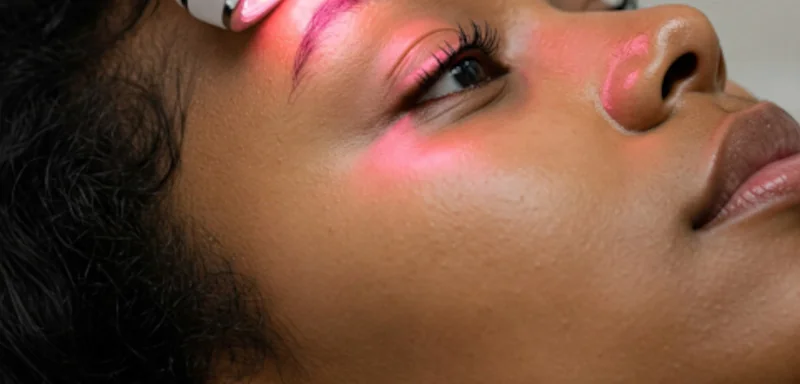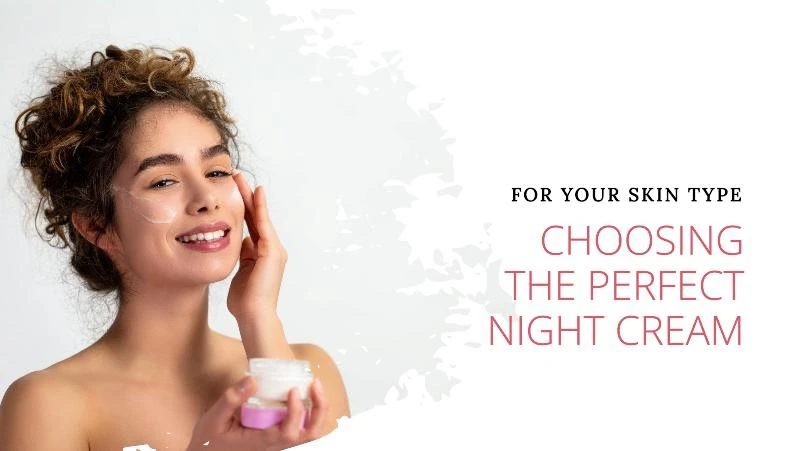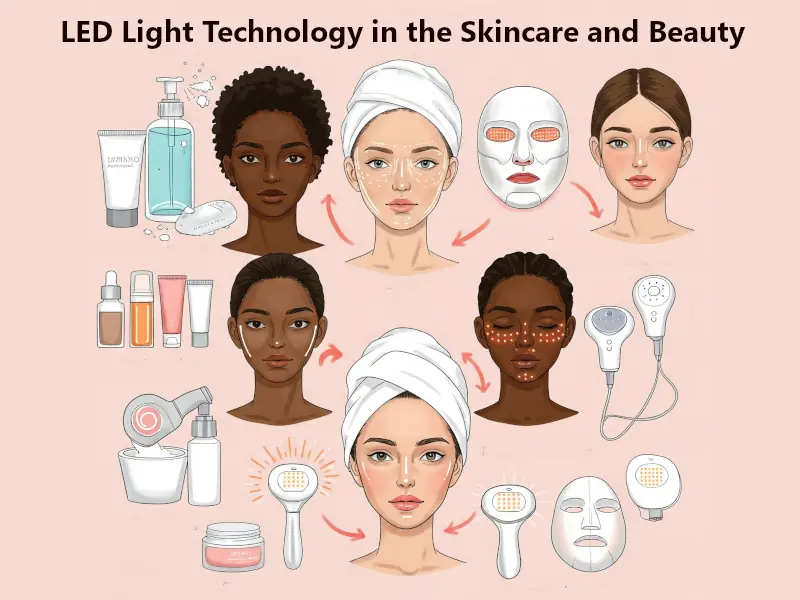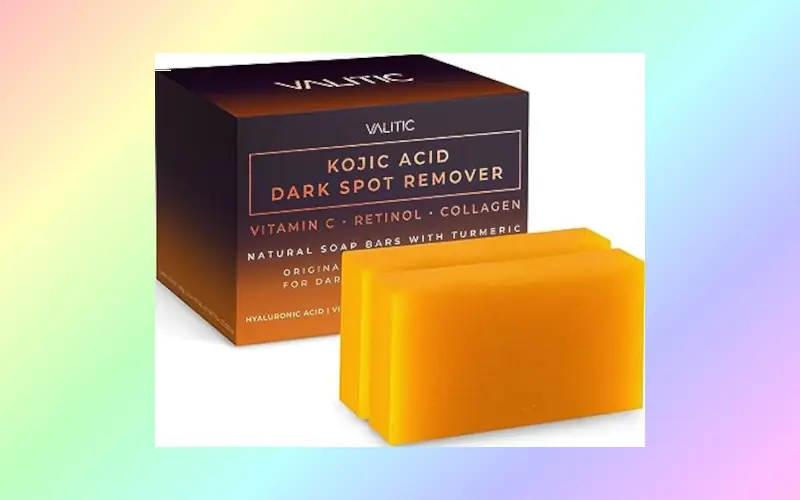LED Light Therapy: How Different Wavelengths Affect Your Skin

Imagine your skin cells are like tiny gardeners in your body, and different colors of light are like different types of sunlight. Just as some sunlight helps flowers bloom and others help vegetables grow, different wavelengths of LED light therapy in skincare have specific effects.
This article is all about understanding this colorful sunlight and how each color, or wavelength, has a unique job when it comes to your skin. We won’t get bogged down in complicated science; think of it as learning the simple secrets behind why one light might help with breakouts while another might make your skin look smoother.
Ever wondered why there are so many different colors of LED light therapy devices out there? It’s because understanding these differences is super helpful for you! If you know what each color does, you can make smarter choices about which treatments might actually work for your specific skin concerns. It’s like knowing the right tool for the right job – you wouldn’t use a hammer to paint a wall!
So, get ready to explore the amazing world of light and skin! We’ll take a simple journey through the light spectrum, looking at the main colors used in LED therapy and what they do. By the end, you’ll have a better grasp of how different colors of light penetrate skin layers and what kind of biological response of skin to LED light you can expect. This knowledge will help you feel more confident when considering LED light therapy as a way to care for your skin.
- The Language of Light: Wavelengths and Energy
- How Light Interacts With Skin
- How LED Light Therapy in Skincare Interacts
- Red Light (630-660nm): Mechanisms and Benefits
- Blue Light (405-470nm): Mechanisms and Effects
- Near-Infrared Light (700-1000nm): Mechanisms and Effects
- Yellow/Amber Light (570-590nm): Mechanisms and Effects
- Green Light (520-560nm): Mechanisms and Benefits
- The Dose-Response Relationship
- Takeaway
The Language of Light: Wavelengths and Energy
In LED light therapy, understanding the fundamental nature of light is crucial to grasping its therapeutic effects. Light exhibits a dual nature, behaving both as waves and as particles (photons). These photons carry energy, and the way light interacts with the body is largely determined by its wavelength, which is the distance between successive crests of a light wave.
Wavelength is a critical factor in LED light therapy in skin care as it dictates both the depth of penetration into the skin and the specific cellular components (chromophores) that absorb light energy. Light wavelengths are part of the electromagnetic spectrum, which spans from very short gamma rays to long radio waves. Within this spectrum, visible light occupies a narrow band (approximately 400–700 nm), encompassing the wavelengths humans perceive as color.
Key Concepts in Light Therapy
- Wavelength and Energy: Wavelength is inversely proportional to energy; shorter wavelengths (e.g., blue light at 400–470 nm) carry higher energy, while longer wavelengths (e.g., red light at 630–660 nm and near-infrared light at 700–1000 nm**) have lower energy per photon. Wavelength also determines the color of visible light that we perceive.
- Measurement Units (Several units are commonly used in light therapy):
- Nanometers (nm) specify the wavelength of light.
- Fluence (J/cm²) measures the total energy delivered per unit area of skin.
- Power density (mW/cm² or W/cm²) indicates the rate at which energy is delivered to the skin surface.
These are related through the formula: Power Density × Time = Fluence.
Therapeutic Wavelengths in LED Therapy
Certain wavelengths are therapeutic because they can be absorbed by specific chromophores within cells, such as mitochondrial cytochrome C oxidase (COX). This absorption triggers beneficial downstream effects, including:
- Increased ATP production (cellular energy).
- Nitric oxide release, promoting vasodilation and circulation.
- Inflammation modulation, reducing redness and swelling.
The proven wavelengths for effective treatment of skin, pain, acne, and hair loss include:
- Blue light (400–470 nm): Targets acne-causing bacteria and superficial layers.
- Red light (630–660 nm): Stimulates collagen production, reduces inflammation, and promotes skin rejuvenation.
- Near-infrared light (700–1000 nm): Penetrates deeply to assist with tissue repair and pain relief.
Other wavelengths, such as green light (515–525 nm) and yellow/amber light (570–595 nm), are being researched for potential benefits like hyperpigmentation reduction, redness calming, and enhanced circulation. However, the scientific consensus on their efficacy remains less robust compared to blue, red, and near-infrared light.
Exclusion of UV Light
Ultraviolet (UV) light, while part of the electromagnetic spectrum, is excluded from LED light therapy due to its detrimental effects on the skin, including DNA damage and oxidative stress. This exclusion reinforces LED therapy’s focus on safety and non-invasive treatment.
While sources do not provide a unified visual representation of the therapeutic spectrum, it can be understood as spanning the visible and near-infrared portions of the electromagnetic spectrum (400–1000 nm), where wavelengths have demonstrated therapeutic potential.
How Light Interacts With Skin

When light energy encounters the skin, it can undergo three primary interactions: absorption, reflection, and scattering. The proportion of each interaction depends largely on the wavelength of the light and the properties of the skin itself. For LED light therapy to be effective, the light must be absorbed by specific targets within the skin.
The key to light absorption lies in the concept of chromophores, which are cellular light receptors or specific molecules within cells that absorb certain wavelengths of light more readily than others. These chromophores convert the light energy into biochemical energy, triggering cellular responses.
Primary Photoacceptors in Skin Cells
- Mitochondrial cytochrome c oxidase (COX): Absorbs red and near-infrared light, leading to increased ATP production.
- Endogenous protoporphyrins: Found in Propionibacterium acnes bacteria, these absorb blue light, producing reactive oxygen species that destroy the bacteria.
- Melanin: Absorbs a broad spectrum of visible light, influencing skin pigmentation and temperature.
- Hemoglobin: Absorbs visible light, particularly red wavelengths, supporting circulation and oxygen transport.
- Water: Absorbs longer wavelengths, such as near-infrared light, influencing deeper skin layers.
Penetration Depth and Wavelength Interaction
Penetration depth determines which skin layers and chromophores are affected by the light:
- Blue light (405–470 nm): Targets the epidermis, the outermost skin layer.
- Red light (630–660 nm): Reaches the dermis, approximately 5 mm below the surface.
- Near-infrared light (700–1000 nm): Penetrates deeply into the subcutaneous tissue, up to 20 mm.
- Green light (around 520 nm): Interacts with the surface layers, focusing on the epidermis.
Skin Component Interactions
Different skin components absorb and respond to various wavelengths:
- Blue light interacts with porphyrins in bacteria and hemoglobin in the skin’s surface layers.
- Red light targets melanin and hemoglobin in the dermis while enhancing mitochondrial activity.
- Near-infrared light interacts with water molecules, penetrating deeply for applications in pain management and wound healing.
- Green light may affect melanocytes and dilated capillaries, potentially reducing redness and pigmentation.
The Optical Window for Biological Tissues
The optical window for biological tissues refers to wavelengths that penetrate skin most effectively. Wavelengths between 600–800 nm are optimal for clinical applications as they balance minimal absorption by water and hemoglobin with sufficient penetration depth. Among visible wavelengths, red light penetrates the skin the most, followed by green and blue.
How LED Light Therapy in Skincare Interacts

When light interacts with the skin during LED therapy, three main phenomena occur: absorption, reflection, and scattering. The therapeutic effects of LED light stem primarily from absorption, where skin cells take in the light energy. This absorption is facilitated by chromophores, which are specific light-absorbing molecules within the skin cells. Primary photoacceptors such as mitochondrial cytochrome C oxidase play a crucial role in this process.
The depth of light penetration is a key factor and is largely determined by the wavelength of the light. Shorter wavelengths, like blue light (400-495nm), penetrate the skin to a shallower depth, primarily reaching the epidermis. Longer wavelengths, such as red light (630-660nm), can penetrate deeper into the dermis. Near-infrared (NIR) light (700-1000nm) has the greatest penetration capability, reaching the subcutaneous tissue.
Different components of the skin absorb light at varying wavelengths. Melanin in the epidermis and hemoglobin in the dermis are key absorbers of visible light, including red and blue light. Water in the skin absorbs near-infrared light more effectively. The range of 600 to 800 nm is considered an optical window for biological tissues, as light within this range can penetrate the skin with relatively less scattering and absorption, making it effective for various therapeutic applications.
Red Light (630-660nm): Mechanisms and Benefits

Red LED light therapy, typically in the range of 630-660 nm, utilizes photobiomodulation to stimulate cellular activity. The primary cellular target is the mitochondria, specifically cytochrome c oxidase (COX), a key photoreceptor that absorbs red and near-infrared light.
When COX absorbs red light wavelengths, it leads to an increase in ATP (adenosine triphosphate) synthesis, enhancing cellular energy transfer and function. This energy boost promotes circulation and healing.
Red light is effective in promoting skin rejuvenation by stimulating fibroblasts, the cells responsible for collagen production. Increased collagen leads to improved skin elasticity, reduction in fine lines and wrinkles, and enhanced skin texture and tone. In vitro studies show that 660 nm. LED light increases procollagen secretion and decreases collagen-degrading enzymes. Red light can penetrate the dermis (around 5-10 mm), affecting these cellular processes.
Red light also has anti-inflammatory effects, potentially by reducing pro-inflammatory cytokines. While specific cellular communication changes aren’t detailed, the described mechanisms suggest enhanced overall cellular function and interaction.
Documented Skin Benefits with a scientific basis include:
- Improved skin elasticity and reduction in fine lines and wrinkles
- Enhanced skin texture and tone, promoting a youthful appearance.
- Accelerated wound healing, aiding in tissue repair.
- Reduced inflammation, contributing to calmer and healthier skin
- Potential reversal of photoaging signs, including dark spots and blemishes.
Timeline expectations vary; some studies show wrinkle improvements after several weeks of repeated sessions, with follow-ups ranging from weeks to months. Effectiveness depends on the condition, treatment parameters, and individual responses. Repeated sessions are generally needed.
Blue Light (405-470nm): Mechanisms and Effects

Blue LED light therapy, typically in the range of 405–470 nm, is well-known for its effectiveness in treating acne. Its mechanisms of action include direct antimicrobial effects and modulation of skin physiology.
One of the primary mechanisms is the activation of porphyrins produced by Cutibacterium acnes (formerly Propionibacterium acnes), a bacterium involved in acne development. Blue light penetrates the skin’s surface layers where these bacteria reside. When absorbed, the blue light energy excites the porphyrins, resulting in the production of reactive oxygen species (ROS) such as singlet oxygen, which are toxic to C. acnes bacteria. Research has observed this photoinactivation effect with wavelengths in the blue light spectrum, particularly within the 405–470 nm range.
In addition to its antibacterial action, blue light may influence acne by reducing sebaceous gland activity, which results in lower sebum (oil) production. This can help prevent clogged pores and subsequent breakouts. However, more studies are needed to determine the lasting effects of this sebum-regulating property.
Blue LED light also exhibits anti-inflammatory properties. Exposure to blue light may reduce the production of pro-inflammatory cytokines, such as interleukin IL-1α and IL-8, which contribute to the redness and swelling of acne lesions. While this anti-inflammatory action is distinct from that of red light therapy, both approaches target inflammation through different cellular mechanisms.
Key Benefits Supported by Research
- Significant reduction in inflammatory acne lesions: Clinical trials report noticeable decreases in lesion counts following blue light treatment.
- Potential improvement in overall skin health and sebum balance: These effects contribute to clearer skin but require further research to confirm long-term benefits.
- Broad-spectrum antimicrobial effects: Blue light is effective against C. acnes as well as other microorganisms, suggesting potential applications in wound healing and preventing secondary infections in conditions like atopic dermatitis.
- Emerging potential in psoriasis treatment: Preliminary studies indicate it may help by reducing keratinocyte proliferation and modulating immune responses.
It is important to note that blue light is most effective for superficial skin layers due to its relatively shallow penetration compared to red or near-infrared light.
Near-Infrared Light (700-1000nm): Mechanisms and Effects
Near-infrared (NIR) light, typically in the range of 700–1,000 nanometers (nm), is renowned for its deep-tissue penetration capabilities. Having longer wavelengths than red light, NIR can reach beyond the dermis into subcutaneous tissue and even impact muscles, nerves, and blood vessels.
NIR light significantly impacts mitochondrial function. Similar to red light, NIR wavelengths are absorbable by the mitochondria, specifically targeting chromophores to increase the production of ATP, the molecule responsible for cellular energy. This upregulation of the mitochondrial process helps compromised cells function more effectively.
One of the dramatic effects of NIR light therapy, like red light, is the triggering of the release of nitric oxide. Nitric oxide is the body’s natural vasodilator, causing blood vessels and capillaries to widen. After just 20 minutes of light therapy, blood flow is increased to nerves and other tissues, and this boost in microcirculation lasts for several hours. Increased blood flow helps move toxins out of the body and can generate new, healthier tissue.
Due to its deep penetration and effects on cellular energy and circulation, NIR light plays a significant role in wound healing and tissue repair. It can accelerate the healing process and is utilized in therapeutic applications such as pain management and muscle recovery.
Specific skin benefits backed by research for wavelengths within the NIR range (often studied in conjunction with red light) include:
- Accelerated wound healing.
- Improves skin rejuvenation and collagen density, reducing fine lines and wrinkles.
- Reduction of fine lines and wrinkles.
- Potential usefulness in reducing psoriatic lesions and controlling abnormal skin proliferation, with studies using 830 nm NIR light.
It is important to note that NIR wavelengths are invisible to the human eye.
Yellow/Amber Light (570-590nm): Mechanisms and Effects

Yellow LED light, typically in the range of 570–590 nm and often referred to as amber light at around 590 nm, offers therapeutic effects, particularly in healing and circulation. While there is some divergence in scientific opinions, many studies suggest promising benefits.
Yellow light has a shallow to intermediate penetration profile, reaching deeper than blue light but not as deeply as red or near-infrared light. Its primary mechanism involves stimulating the production of ATP (adenosine triphosphate), a key molecule in cellular energy transfer. This stimulation promotes cellular metabolism, enhances circulation, and may accelerate the healing process.
Due to its effects on cellular metabolism and inflammation, yellow light may support sensitive skin, aiding in natural repair processes. It is known to reduce inflammation, which can benefit wound healing and post-operative recovery. While the mechanisms involving blood vessels or lymphatic drainage are not explicitly detailed, the enhanced circulation promoted by yellow light may indirectly support these processes.
A study comparing red light and amber light (590 nm) for reducing periorbital wrinkles found that both were effective, with slightly better outcomes observed with red light. This suggests that amber light may offer barrier function support related to aging skin, though perhaps to a lesser extent than red light.
Potential Skin Benefits of Yellow Light:
- Accelerated wound healing.
- Reduced inflammation, aiding in recovery and redness reduction
- Enhanced circulation, contributing to skin health.
- Reduction in wrinkles, particularly around the eyes, as observed with amber light.
- Stimulation of cellular metabolism for improved skin repair.
While research supports many of these effects, it is important to note that some sources question the efficacy of yellow light for broader applications, such as pain relief, acne treatment, or hair loss. Further studies are needed to confirm its mechanisms and benefits across a wider range of concerns.
Green Light (520-560nm): Mechanisms and Benefits

Green LED light therapy typically utilizes wavelengths in the range of 520–560 nm, targeting the superficial layers of the skin, specifically the epidermis. This makes green light distinct from red and near-infrared light, which penetrate deeper into tissues.
A key cellular mechanism associated with green light is its interaction with melanin, the pigment responsible for skin color and hyperpigmentation. The green light is believed to help address pigmentation concerns by targeting excess melanin, which may lead to a more even complexion. However, the exact mechanism, including the possibility of directly breaking down pigment, remains an area requiring further research.
Due to its effects on melanin production and distribution, green light therapy is often cited as being effective in managing hyperpigmentation concerns like sunspots, age spots, and discoloration. By targeting melanin clusters, it may contribute to an overall more even and radiant skin tone, though more scientific studies are needed to confirm these effects.
Green light therapy is also known for its calming properties, helping to soothe irritated and red skin—often associated with conditions like acne and rosacea. Additionally, green light has anti-inflammatory properties that may ease breakouts, minimize redness, and contribute to a more balanced complexion.
Some reports suggest that a green light may assist in managing dilated capillaries and redness, although specific research is limited.
Potential Skin Benefits:
- Reduction in hyperpigmentation, including sunspots, age spots, and uneven skin tone.
- Calming irritated skin and reducing redness, including that associated with breakouts.
- Possible reduction in the appearance of dilated capillaries and dark circles around the eyes
- Rejuvenation of the skin, contributing to a more radiant complexion.
It is important to note that some sources question the efficacy of green light for treating skin issues like pain, acne, and hair loss. While evidence supports its role in hyperpigmentation management and soothing irritated skin, the scientific consensus remains divided.
The Dose-Response Relationship
The effectiveness of LED light therapy depends on the dose of light energy delivered to the target tissue, a concept known as the dose-response relationship. Achieving optimal treatment outcomes requires understanding key dosing factors, including treatment time, power density, wavelength, treatment frequency, and intervals.
Key Factors in Dosing
- Treatment Time: Treatment time directly determines the total energy delivered. For acute conditions, some individuals may notice improvement after the first few sessions. For chronic conditions, significant results may require 24–36 treatments. Individual sessions typically last between 10 and 30 minutes, depending on the treatment area and goals. At-home devices can vary, requiring anywhere from a few minutes daily to 30–60 minutes twice a day for several weeks, based on device specifications.
- Power Density and Fluence: Power density (W/cm²) refers to the energy delivered per surface area of skin, while fluence (J/cm²) is the total energy received over time, calculated as:
Power Density × Time = Fluence.
Treatment efficacy depends not just on fluence but also on the balance between power density and treatment time. The distance of the LED device from the skin can significantly influence power density. - Wavelength-Specific Effects: Different wavelengths penetrate the skin at varying depths and target specific chromophores:
- Blue Light (415–465 nm): Targets acne by killing bacteria.
- Red Light (630–660 nm): Stimulates collagen, improves skin texture, reduces inflammation, and promotes wound healing.
- Near-Infrared Light (830 nm): Penetrates deeply to assist with pain relief and deeper tissue repair.
- Green Light (515–525 nm): May help with hyperpigmentation and redness in superficial skin layers, though more research is needed.
- Yellow/Amber Light (570–590 nm): Suggested to enhance healing and circulation, but with limited scientific consensus compared to blue, red, and NIR.
- Treatment Frequency and Protocols: Most conditions benefit from 2–3 sessions per week, with adjustments as progress is monitored. Acute conditions may require more frequent sessions initially, while chronic conditions typically benefit from ongoing maintenance (e.g., weekly or biweekly sessions after an initial treatment phase). However, standardized protocols remain challenging due to inconsistencies in device parameters, populations, and methodologies. Some studies highlight a biphasic dose response, where low fluences stimulate cell growth and collagen production while high fluences may inhibit these effects.
Current Challenges and Recommendations
The absence of well-established, standardized protocols highlights a need for further research to define optimal parameters for various skin conditions. While consistency is key for achieving results with at-home devices, treatment parameters should always be personalized. Consulting a healthcare professional is strongly recommended, especially for chronic conditions or advanced treatments.
Takeaway
In conclusion, LED light therapy harnesses the power of specific wavelengths to offer a range of complementary benefits for the skin. Different wavelengths penetrate the skin at varying depths, interacting with cellular components to achieve distinct treatment outcomes. For instance:
- Blue light (415–470 nm) targets surface layers to combat acne-causing bacteria.
- Red light (630–660 nm) penetrates deeper, stimulating collagen production, reducing inflammation, and promoting wound healing.
- Green light (around 515–525 nm) works on the superficial skin layers, targeting melanin to reduce hyperpigmentation and calm redness.
- Yellow/amber light (around 590 nm) enhances circulation and supports healing.
The effectiveness of LED therapy depends on matching wavelengths to specific skin concerns. For example, blue light effectively reduces acne, while red light rejuvenates and improves skin texture. This knowledge is fundamental when selecting an LED light therapy device, ensuring it emits the desired wavelengths for specific treatment goals. Considering options like pulsing or continuous light adds further customization based on individual needs.
The science behind these wavelengths highlights the precision of color-specific treatments. By selecting the appropriate wavelength, practitioners can influence cellular processes such as reducing bacterial load, stimulating fibroblasts, or addressing excess pigment. This targeted approach makes LED light therapy a versatile, non-invasive option for addressing a wide array of skin and health concerns.
While the benefits of blue, red, and near-infrared light are well-documented, the applications of green and yellow light remain less established and continue to be explored in research. Consulting with a healthcare professional can help determine the most effective wavelengths and protocols for individual needs.
Source:
- Unlocking the Power of Light on the Skin: A Comprehensive Review on Photobiomodulation
https://www.mdpi.com/1422-0067/25/8/4483 - Light‐emitting diodes in dermatology: A systematic review of randomized controlled trials
https://pmc.ncbi.nlm.nih.gov/articles/PMC6099480/ - Phototherapy with Light Emitting Diodes: Treating a Broad Range of Medical and Aesthetic Conditions in Dermatology
https://pmc.ncbi.nlm.nih.gov/articles/PMC5843358/ - LED Light Therapy: How It Works, Colors, Benefits and Risks
https://my.clevelandclinic.org/health/treatments/22146-led-light-therapy - LED Red Light Therapy Wavelengths: Everything You Need to Know
https://www.celluma.com/blogs/blog/what-is-the-most-effective-color-for-led-light-therapy - Your Complete Guide to Green Light Therapy
https://www.shelleyhancock.com/blog/green-light-therapy/ - Green Light Therapy: Beauty, Health, and Well-Being Benefits
https://www.foreo.com/mysa/green-light-therapy-beauty-health-and-well-being-benefits - Unlocking the Power of Light on the Skin
https://pmc.ncbi.nlm.nih.gov/articles/PMC11049838/ - How does LED light therapy work?
https://healthlightllc.com/2020/05/14/common-questions-about-led-light-therapy/ - Different wavelengths of LED light for specific treatments
https://skinimpactled.com/blogs/articles/different-wavelenghts-of-led-light-for-specific-treatments
Trust in your purchase:
Every product featured on our site has been carefully researched and selected based on quality, customer ratings, and positive reviews to ensure you receive excellent value for your money.
Please note:
This post contains affiliate links. If you make a purchase through these links, we may earn a small commission at no additional cost to you. This helps support our site and allows us to continue bringing you valuable content. Thank you!
Thank you for your precious time spent with AestheticThrive.






